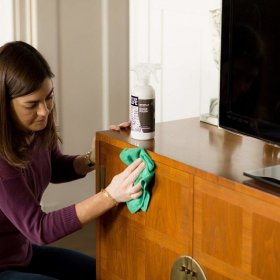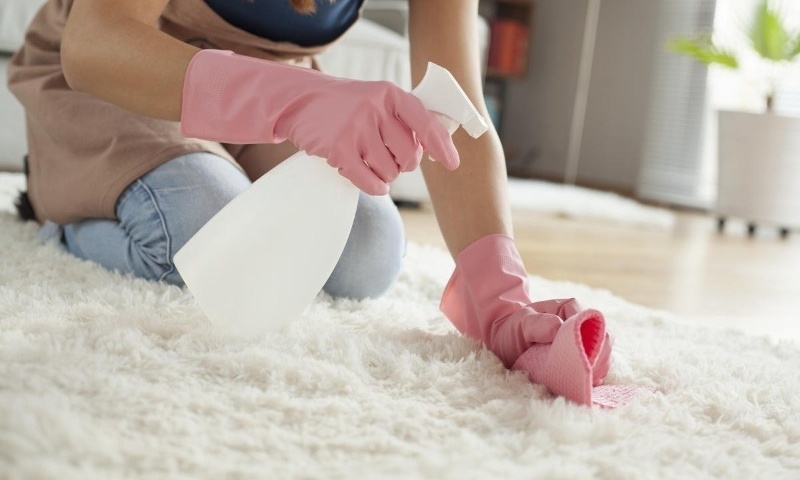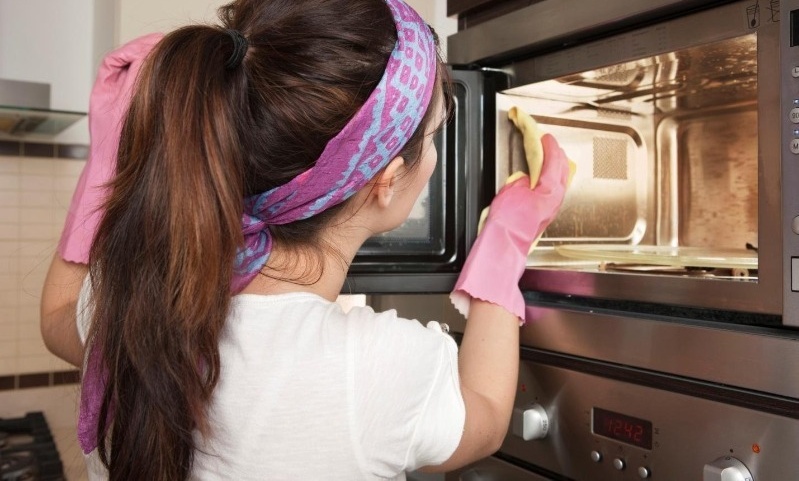8 effective tools to eliminate scratches from furniture

It is almost impossible to avoid the appearance of various scuffs on furniture during operation. Even one noticeable scratch can significantly spoil the appearance of the product. If hidden defects can still be forgotten, then visible damage should be repaired. This is easy to do if you use one of the following tools.
Wax
On sale you can find special wax for furniture. It is soft and hard. Solid is usually used in professional work, since without special skills it will not work to achieve the desired result. Soft wax is more suitable for self-repairing scratches, it has a wide palette of colors and is easy to apply.
Before use, the surface is cleaned of dirt and dust, and then lightly warmed wax in the hands is copiously applied to the area with a scratch. In a circular motion, the product is rubbed into the surface, and then the excess is removed with a spatula or any other improvised tool (plastic ruler, card, etc.). At the end, the furniture is polished with a soft cloth.
Oil for cars
This method is suitable exclusively for products of dark colors (walnut, oak, mahogany). A small amount of used engine oil will be required, while the brand, type, viscosity and other characteristics do not play any role.
Soak a cotton swab with oil and carefully treat the damage. The surface is left in this form for several minutes, after which it is carefully polished with a soft cloth. On light furniture, you should not even try to use this method. This will cause the light scratch to turn into a dark brown strip, which will not be easy to remove.
Sandpaper
Sandpaper copes well with various defects. To smooth scuffs and make the surface uniform, use fine-grained paper, which is used for finishing grinding products. It is better to choose an emery cloth with a marking of P 600 and above.
Preliminarily, a sheet of sandpaper is moistened with water, and then, with careful movements, a damaged area is treated with it. To remove the clear contours of the polished area, you need to grab a little area around the scratch itself. Then it remains only to polish the product.
Shoe polish
To mask shallow scuffs, you can use shoe cream. Black is suitable only for very dark surfaces (black products or shades of wenge), and for the rest of the furniture you need to carefully select the color of the product.
It is most convenient to apply the cream with a cotton swab. Previously, the surface is cleaned of dust and other contaminants. After processing the scratches with cream paint, you must wait a few minutes, and then remove the remnants of the product. The effect of this method cannot be called persistent, since after each wet cleaning damage will become more noticeable. But to solve the problem, it is enough to repeat the procedure periodically.
Special colorless marker
A quick and easy option - special markers to eliminate damage to furniture. You can choose both a colorless option, and pick a shade to the surface. Markers qualitatively hide scratches, chips and other defects, you just need to draw them with a writing rod.
The agent dries quickly and has almost no smell. Marker-treated areas easily tolerate wet cleaning and contact with detergents.
Iodine
For light furniture, this method is not suitable, but on dark surfaces (wenge, cherry and others) iodine will quickly mask all scuffs. Previously, iodine needs to be slightly diluted with water. In the resulting solution, a cotton swab is moistened and the scratch is carefully painted over, it is impossible to go beyond it.
When the iodine dries, the surface is polished.
Vinegar
Eliminate minor scratches and scuffs on furniture of any color using vinegar and olive oil. Take a small container and mix the components in a ratio of 1: 3. The resulting solution rubbed damaged areas on the surface. When defects become imperceptible, furniture is wiped dry with a clean soft cloth.
Paraffin
Paraffin is great for products in light colors. You will need an ordinary candle, from which a small piece is cut off. Slightly knead the paraffin, lay it on the surface and rub it into the scratch with smooth movements.
When the damage is filled with paraffin, you can begin to polish this area.


